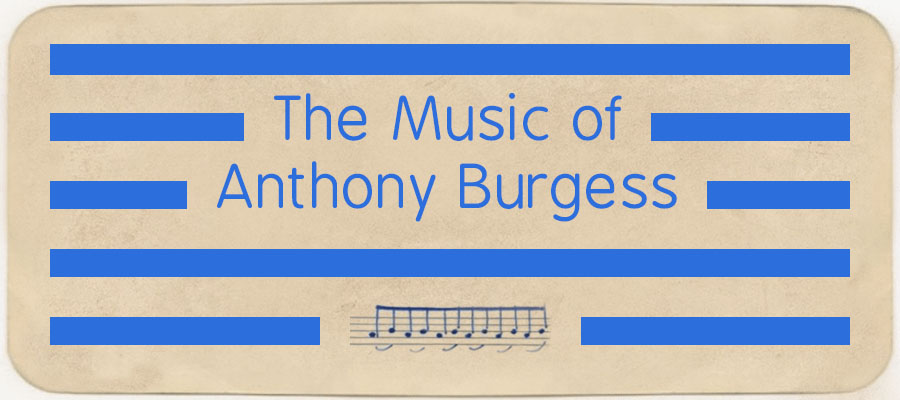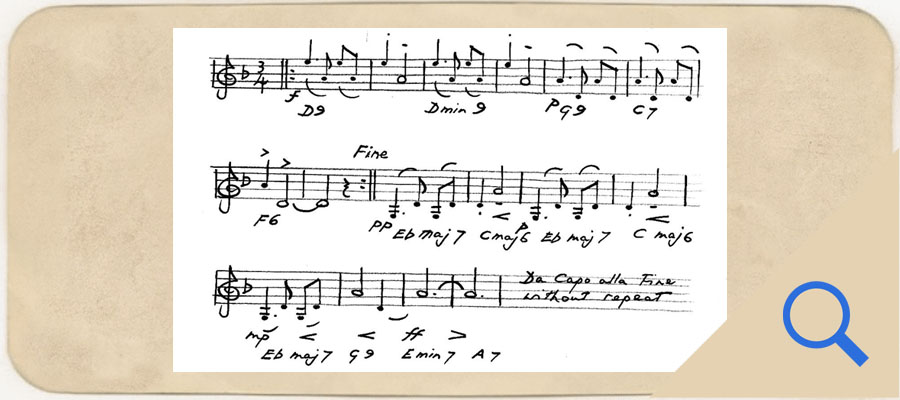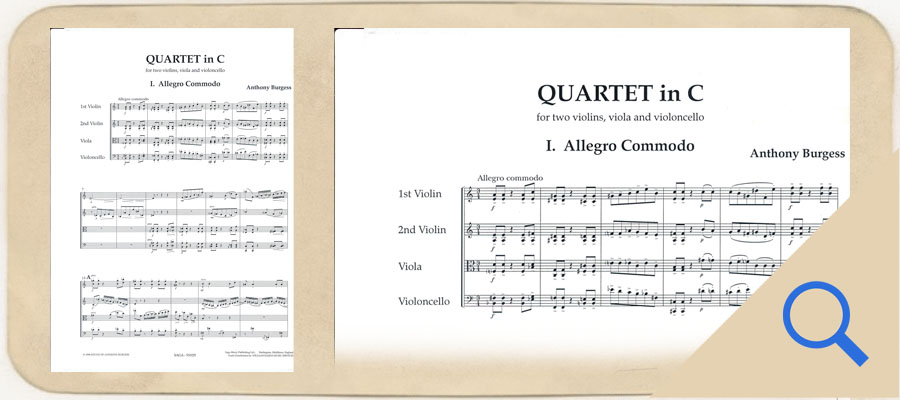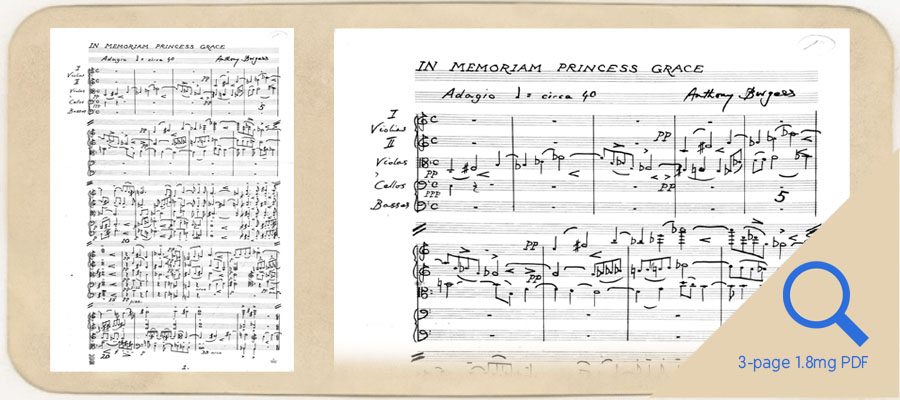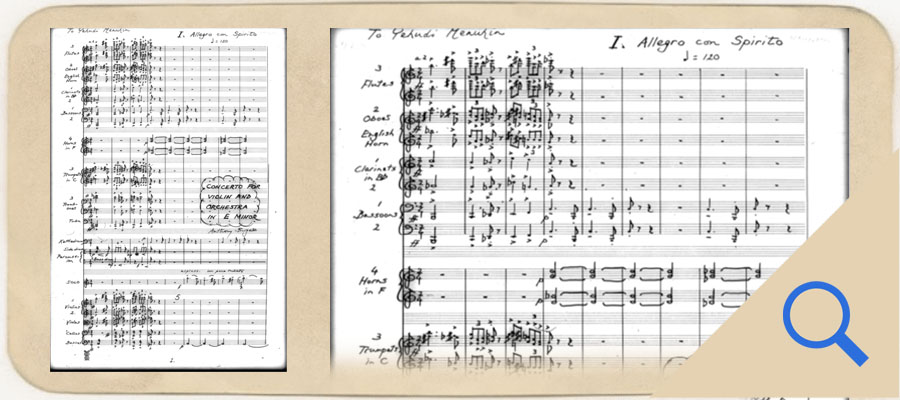The Music of Anthony Burgess: String Quartet
Explore Anthony Burgess’s String Quartet and his other works for the violin below.

One of Burgess’s pieces for students of the violin. Titled ‘Fingers Off’, this short exercise appears at the end of his novel The Pianoplayers.

Listen to the third movement of String Quartet by Anthony Burgess, in its European premiere performance at the Burgess Foundation in 2014 by the Heath Quartet.

The first page of the engraved score of Burgess’s String Quartet.

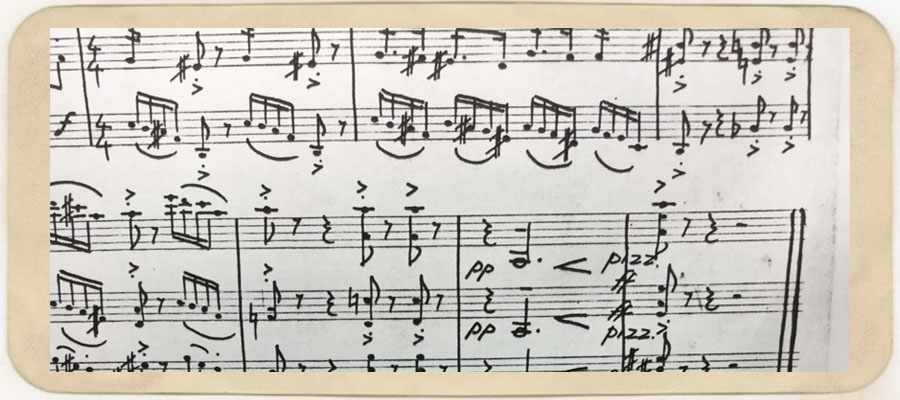
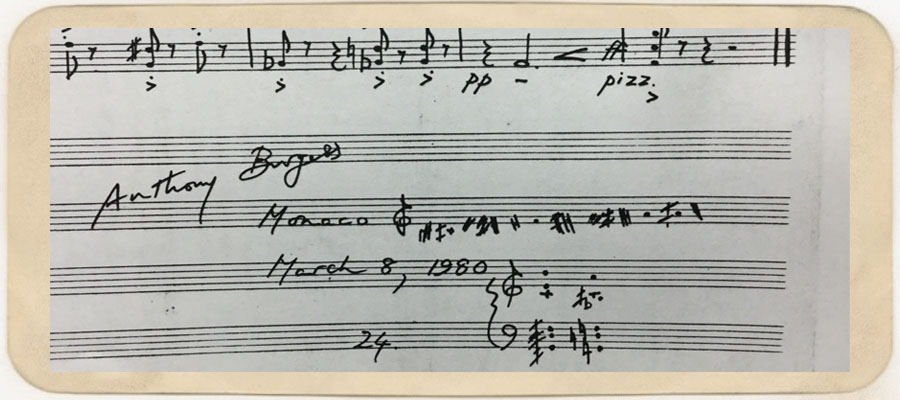
Pages from Anthony Burgess’s manuscript score of his String Quartet.


Pages from the manuscript score of In Memoriam Princess Grace by Anthony Burgess.

The first page of the manuscript score of Concerto for Violin and Orchestra in E minor by Anthony Burgess, dedicated to Yehudi Menuhin.

String Quartet in context
Anthony Burgess’s only formal musical instruction came in the shape of violin lessons at the age of seven. These took place at Mr Bradshaw’s School of Music on Moss Lane East in Manchester, and Burgess was not a promising student. As he later wrote in This Man and Music:
I could not carry a tune and I used the piano only as a percussion instrument for expressing tantrums, so there was only the violin left. The violin was a small instrument and hence fairly cheap. Mr Bradshaw was very eager to sell violins. I treated my violin badly. I chipped the varnish and broke one of the pegs. My bow was a disgrace, unresined and filthy and so slack that I could have played baroque four-part harmony with it if I had wanted to or had known what it was. It was known that I was hopeless.
Burgess eventually pretended to go his lessons but instead truanted in a nearby park. When found out, trouble ensued and his lessons were stopped; but later in life he acquired what he describes as ‘a kind of theoretical or ghost proficiency in the instrument. I was to learn, without ever physically touching a violin again, a kind of sympathy for violinists.’ This expressed itself in a number of works for strings, including easy pieces for learners — such as ‘Fingers Off’, an exercise on the open strings that appears in the final pages of his novel about music The Pianoplayers — and major works including a cello sonata, a concerto for violin and orchestra, and chamber pieces.
One of Anthony Burgess’s most accomplished and lyrical works for these instruments is his only complete string quartet, written in 1980.
The String Quartet is dedicated to the Primavera Quartet, winner of the 1977 Naumberg Award in chamber music. Burgess became acquainted with the quartet through his collaborator on projects including Oedipus Rex, the award-winning American composer Stanley Silverman. Silverman was married to Martha Caplin, the principal violinist of the quartet. On hearing their music, Burgess decided to compose a piece for them.
The quartet is in three movements. The first is an Allegro commodo, angular and atonal in the manner of Shostakovich; the second is an Adagio, emotional and sweeping, reminiscent of early Schoenberg; and the third is an Allegro molto, lyrical and the most accessible of the sections. Burgess never heard the piece in his lifetime as the quartet disbanded before they had chance to play it; its European premiere was given by the Heath Quartet at the Burgess Foundation in 2014.
Burgess’s String Quartet sits alongside two other works for strings: In Memoriam Princess Grace, an elegy for Princess Grace of Monaco, whom Burgess knew and who died in a car accident in 1982; and Concerto for Violin and Orchestra in E minor, written for Yehudi Menuhin in 1979. Burgess and Menuhin had met in 1965 and exchanged letters. Burgess later reviewed Menuhin’s memoir in 1977. When Menuhin received the score from Burgess he was delighted, writing:
I was amazed to receive so excellent, professional and viable a violin concerto from you. The concerto has flow, impetus, thematic construction, a good cadenza and an interesting slow movement in its development and gradual acceleration of pace.’
Sadly, Menuhin never performed the work and it is still awaiting its premiere.




